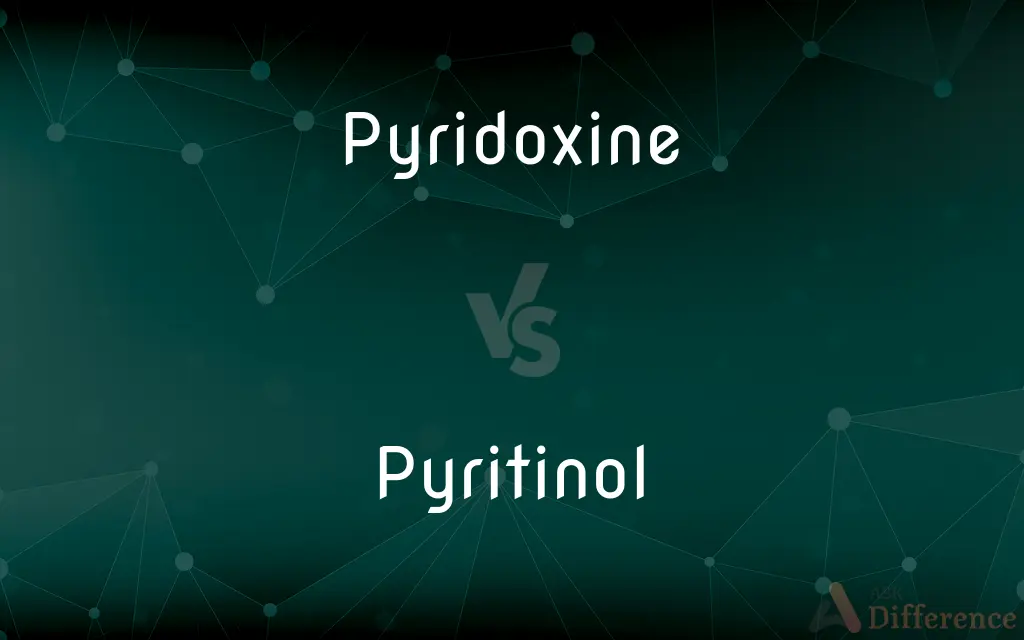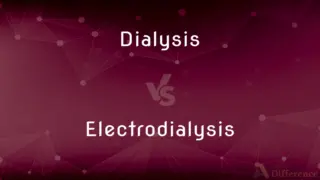Pyridoxine vs. Pyritinol — What's the Difference?

Difference Between Pyridoxine and Pyritinol
ADVERTISEMENT
Compare with Definitions
Pyridoxine
Pyridoxine, is a form of vitamin B6 found commonly in food and used as a dietary supplement. As a supplement it is used to treat and prevent pyridoxine deficiency, sideroblastic anaemia, pyridoxine-dependent epilepsy, certain metabolic disorders, side effects or complications of isoniazid use, and certain types of mushroom poisoning.
Pyritinol
Pyritinol also called pyridoxine disulfide or pyrithioxine (European drug names Encephabol, Encefabol, Cerbon 6) is a semi-synthetic water-soluble analog of vitamin B6 (Pyridoxine HCl). It was produced in 1961 by Merck Laboratories by bonding 2 vitamin B6 compounds (pyridoxine) together with a disulfide bridge.
Pyridoxine
A pyridine derivative, C8H11NO3, that is one of several forms of vitamin B6 and is the form typically found in vitamin supplements and enriched foods.
Pyritinol
(pharmaceutical drug) A nootropic drug whose structure is that of a disulfane derived from pyridoxine.
Pyridoxine
(vitamin) A derivative of pyridine, 4,5-bis(hydroxymethyl)-2-methylpyridin-3-ol, found in fish, liver, cereals and yeast, and essential for the metabolism of amino acids and starch.
ADVERTISEMENT
Pyridoxine
A B vitamin that is essential for metabolism of amino acids and starch
Share Your Discovery

Previous Comparison
Angle vs. Vertex
Next Comparison
Dialysis vs. Electrodialysis














































